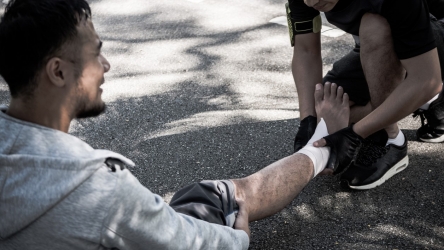
- What is Circumcision
Circumcision is defined as the removal of a simple fold of skin that covers the head of an un-erected penis. Parents who decide to circumcise their new-born boys often do so for religious, social or cultural reasons.

- Medical Conditions
Contrary to popular belief, there is some evidence, which suggests that Adult Circumcision offers health benefits, including:
- Reduced risk of urinary tract infections.
- A decreased risk of some sexually transmitted diseases in men.
- Protection against penile cancer.
- Prevention of balanitis and balanoposthitis.
- Prevention of phimosis and paraphimosis
- Treatment for tight foreskin.
- Surgery techniques
There are two types of circumcision surgical techniques, which are employed in this kind of surgery:
- Forceps (Traditional) – The use of forceps to remove the foreskin is the trusty ol’ approach to circumcise a penis. Experts from Circumcision Center remark that this technique is being used as a –pre & post – solution to several medical conditions, like phimosis etc. Unlike the Plastibell technique, this procedure requires the use of surgical tools. The surgeon uses a pen to mark the area to be treated before an incision is made. The foreskin is pulled back in front of the glans before being cut away with a scalpel. The forceps are used to help guide the scalpel. Blood vessels are sealed using ‘bipolar diathermy’ or electro-cautery. This clean cut is then closed with stitches or a special type of glue. These will be either the dissolvable or non-dissolvable stitches. If you have non-dissolvable stitches, then you will need to return to the clinic at a pre-arranged date to have them removed. A paraffin-based surgical dressing is wrapped around the penis. This is designed to prevent your wound from rubbing against your underwear. It also reduces any swelling. Wearing tight briefs will provide extra support.
- Plastibell – The beauty of this technique is that it does not require any cutting or surgical insertions. It’s a relatively simple method which employs a small plastic ring, which is fitted around the head/glans of the penis and then tightened. This tight compression results in blocking the blood supply to the foreskin. After a few days, the foreskin naturally dies and falls off with the plastic ring. It’s a long procedure but on the plus side it does not require any insertion or cutting. However, experts remark that this –plastibell- technique is most suited for babies and young boys.
- Different School of thoughts regarding this procedure
There are three school of thought for this surgical procedure.
- For – Studies have shown that circumcised males have a decreased risk of urinary-tract infections in the first year of life, as well as of cancer of the penis and sexually transmitted diseases such as herpes and human papillomavirus (HPV) later in life. Recent research found that adult male circumcision in Africa reduces the risk of acquiring HIV by up to 60 percent. There is clear evidence, which shows that male circumcision offers protection against STD’s in both male and female partners. Another interesting thing to note here is the 3% of the boys who are not circumcised in their infancy, but will end up needing the procedure when they get older, because of phimosis (an infection or the medical condition that implies their foreskin doesn’t retract properly).
- Against – A new study in JAMA Paediatrics found that among babies younger than 1, adverse events happened in a less than 0.5 percent of circumcisions (though the study also reveals that this percentage increased by a margin of 10-20% when performed after infancy). Complication in such circumstances include minor bleeding or oozing from the wound, very rarely babies can get a skin infection that can be treated with an antibiotic cream. However, people in this school of thought primarily believe that Medical ethics imply that parents only have the right to make medical decisions that are in a child’s best interest and that all mammals have a foreskin and that’s the way nature intended it. Circumcision shouldn’t be done to children because they can’t give informed consent. They have the right to an intact body.
- Neutral – American Academy of Paediatrics published an updated policy in 2012 declaring that new specific evidence shows that the medical benefits outweigh the risks of the procedure. However, it went on to state that advantages are not sufficient enough to make circumcision a routine practise. And that ultimately, it’s best if you can balance the potential risks and benefits with your own personal feelings about the procedure. You might also want to discuss the matter with your doctor, especially if you or your spouse have any doubts.
- Risks Associated with this Circumcision
Surgery is safe, but no procedure is 100% risk-free. Complications are rare, but they do happen, and it is as well to be aware of these.
This includes:
- Too much bleeding or infection in the area
- An awful lot of skin removal
- Side effects from medicines or methods being used to achieve the desired results.
- Damage to the urethra which causes it to narrow and impede the flow of urine.
- Abnormal scar tissue which may need further surgery to correct.







